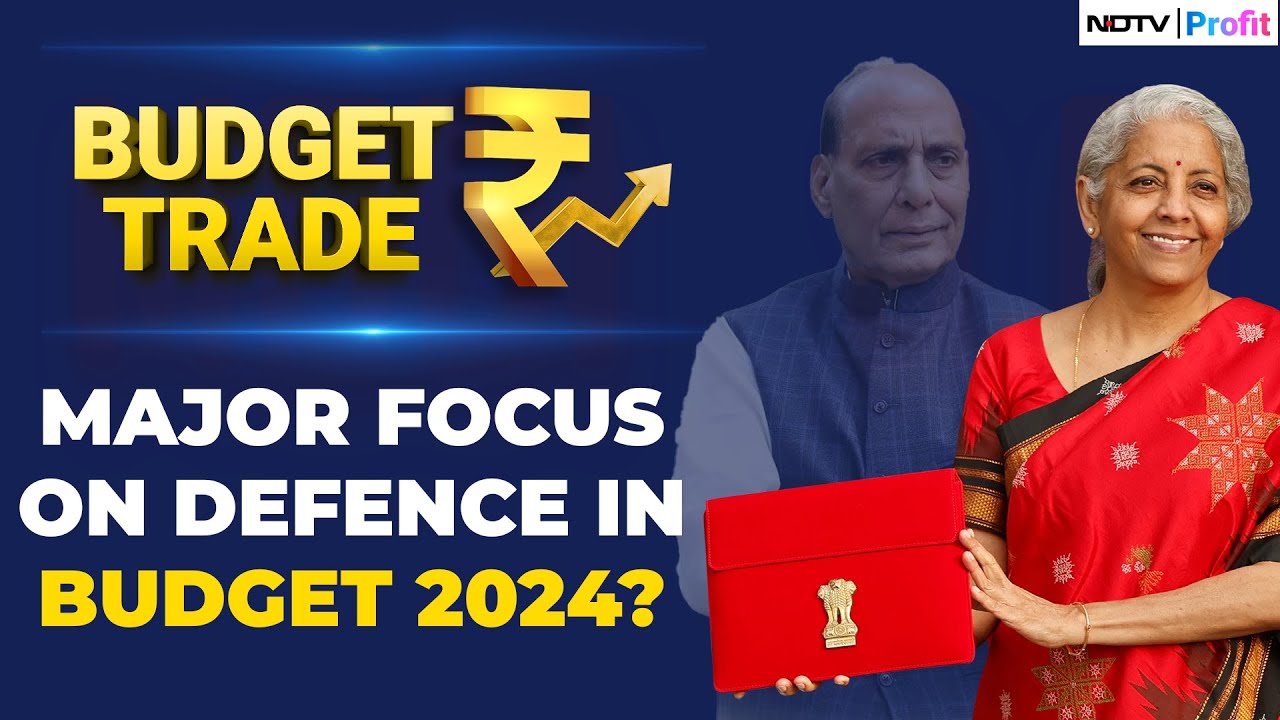Budget for Atmanirbharta in defence and Agnipath scheme | Budget 2024 | Agniveer | Budget news
Summary
TLDRIn this episode of the Budget Show with Business Standard, host Keska Gupta and experts Ares Mohan and Pastor Kumar discuss the future of India's Agnipath scheme and potential modifications in the upcoming budget. They explore the financial implications of changes to the scheme, the defense budget allocation, and the impact of geopolitical relations with China and Pakistan. The experts highlight political pressures, job vacancies, and the push for defense self-reliance, considering the upcoming assembly elections and the broader context of India's defense strategy.
Takeaways
- 😀 The Agnipath scheme has been a contentious issue and a hot topic in the Parliament session, with potential modifications expected in response to election outcomes and public sentiment.
- 🏛️ The Modi government has historically responded to election messages, such as withdrawing the land acquisition bill in 2015 and the three farm laws in 2022, suggesting a possible response to the Agnipath scheme concerns.
- 💡 The Agnipath scheme was introduced with the aim of maintaining a youthful profile in the armed forces and reducing the wage and pension bill, which currently consumes a significant portion of the defense budget.
- 💼 Financial implications of modifying the Agnipath scheme could affect the overall defense allocation, potentially impacting the modernization and mechanization of the armed forces.
- 🔍 An internal review by the Army has suggested possible modifications to the scheme, such as extending the service period and increasing the retention rate of Agniveers beyond the current 25%.
- 📊 The defense budget's key concern is to reach 2% of GDP, which is a benchmark for advanced economies and a goal that the Indian government has been striving to achieve.
- 🌏 China's defense budget for 2024 is significantly larger than India's, standing at about $232 billion compared to India's $75 billion, reflecting the need for India to match capabilities amid border tensions.
- 📉 Pakistan's defense spending is not explicitly detailed, but it is known that they aim to keep pace with India's capabilities, despite the economic divergence between the two countries.
- 🔑 The Agnipath scheme is occurring amidst broader economic challenges, including jobless growth, unfilled government vacancies, and the pressure of a growing pension bill.
- 🤝 PM Modi's third term is expected to bring continuity and strength to foreign relations, but the improvement of relations with China and Pakistan will also depend on their internal situations and political contexts.
- 🛠️ The upcoming budget is crucial for boosting India's Atmanirbhar Bharat initiative in defense, with the defense industry emphasizing the need for increased capital allocation and measures to promote indigenous production and defense exports.
Q & A
What is the Agnipath scheme and why has it been a contentious issue in India?
-The Agnipath scheme is a military recruitment program introduced by the Indian government aimed at maintaining a youthful profile in the armed forces and reducing the wage and pension bill. It has been contentious due to protests and concerns over job security and the impact on the armed forces' structure.
How has the Modi government historically responded to election outcomes and public sentiment?
-Historically, the Modi government has responded to election outcomes and public sentiment by adjusting policies. For instance, they withdrew the land acquisition bill in 2015 due to protests and upcoming elections, and introduced the PM Kisan scheme in 2018 after losing in key states, attributing the loss to farm distress.
What are the financial implications of modifying the Agnipath scheme on India's defense budget?
-Modifying the Agnipath scheme could impact the defense budget by altering the allocation for wages and salaries versus capital expenditure for equipment modernization. The scheme was intended to reduce personnel costs, so changes might affect the balance between these two budget components.
What is the current percentage of India's GDP allocated to defense, and what is the target percentage?
-The current defense expenditure is less than 2% of India's GDP, which is a concern as most advanced economies spend between 2 to 5%. The Indian government aims to increase the defense budget to reach at least 2% of GDP.
How does India's defense budget compare to that of China and Pakistan?
-China's defense budget for 2024 is about $232 billion, which is triple India's allocation of about $75 billion. China spends about 1.6% of its GDP on defense. Pakistan's defense spending is not specified, but it is generally lower than India's, though they aim to keep pace with India's capabilities.
What is the context of the Agnipath scheme controversy in relation to India's job market and government vacancies?
-The Agnipath scheme controversy is set against the backdrop of jobless growth in India, with critics pointing out the lack of jobs for the youth and the government not filling existing vacancies. There is pressure on the government to address these issues.
How might the internal review of the Agnipath scheme by the Indian Army affect its future?
-The internal review by the Indian Army has put forward suggestions such as recruiting Agnivesh for a longer period and retaining a greater percentage after their service. However, these are only suggestions, and it is unclear if or when these changes will be implemented.
What is the significance of Prime Minister Modi not attending the Shanghai Cooperation Organization Summit?
-Prime Minister Modi's decision not to attend the summit is notable, as it is an important event for regional cooperation. He has previously focused on relations with Central Asia and attended summits in the past. His absence may signal a shift in diplomatic priorities.
What are the expectations from the upcoming budget to boost India's defense and self-reliance (Aatmanirbhar Bharat)?
-The defense industry expects the upcoming budget to increase the capital allocation for defense production, aiming for a growth rate of 20-25% annually to meet the ambitious target of Rs. 3 trillion by FY29. Measures like a defense export promotion council and incentives for R&D and indigenous acquisition could also be part of the budget.
How might the upcoming assembly elections in Maharashtra and Haryana influence the government's decisions on the Agnipath scheme?
-The upcoming elections in Maharashtra and Haryana could influence the government's decisions on the Agnipath scheme, as the issue has been a hot topic in these states. The government may address the scheme in the budget or make changes closer to the elections depending on political pressures.
What role do Small and Medium Enterprises (SMEs) play in the defense production sector, and what are the expectations from the upcoming budget?
-SMEs are expected to play a greater role in defense production, especially in the industrial corridors coming up in Tamil Nadu and Uttar Pradesh. There are expectations that the government will heed the calls for their increased participation in defense production in the upcoming budget.
Outlines

This section is available to paid users only. Please upgrade to access this part.
Upgrade NowMindmap

This section is available to paid users only. Please upgrade to access this part.
Upgrade NowKeywords

This section is available to paid users only. Please upgrade to access this part.
Upgrade NowHighlights

This section is available to paid users only. Please upgrade to access this part.
Upgrade NowTranscripts

This section is available to paid users only. Please upgrade to access this part.
Upgrade NowBrowse More Related Video

What Does The Defence Sector Expect From Budget 2024? | Union Budget Expectations

Currently Executing Orders Worth ₹5,000 Cr In Chennai: J Kumar Infraprojects | CNBC TV18

Exclusive - Growth of the Indian Industry since Independence

Perspective : India's Resilient Economy | 11 January, 2023

Budget 2024 Tax Proposals Impacting NRIs... All The Details Here

Fake news atingem grande mídia - Alexandre Garcia
5.0 / 5 (0 votes)